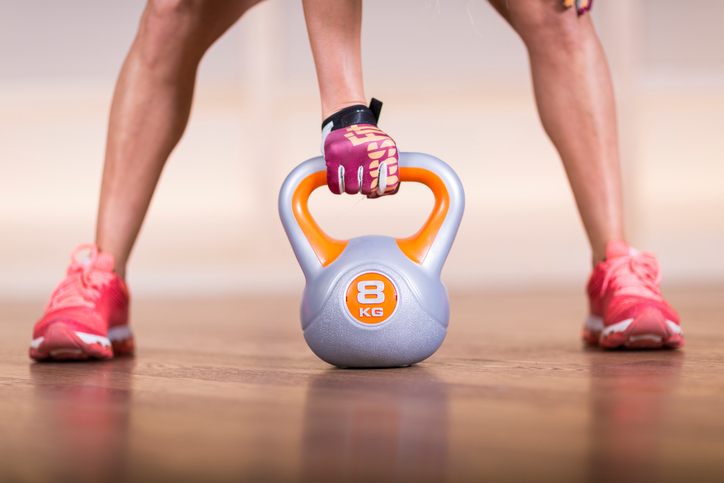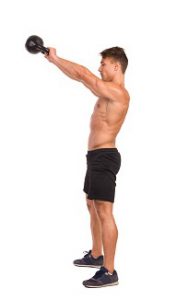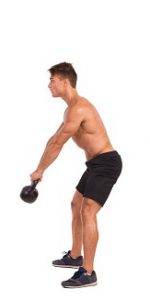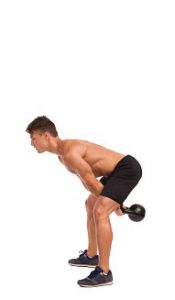This week’s workout is Kettlebell Swings. Kettlebell Swings are an amazing full-body exercise–full-body as in it incorporates virtually every muscle group including your shoulders, upper and lower back, hamstrings, quads, abs, and glutes. Kettlebell Swings are a popular workout because they help with improving coordination, stamina and your cardio endurance. Proper form is extremely important with Kettlebell Swings not only for injury prevention, but also to get the best results. Practicing the motion of the swing and paying attention to your form should be done before even adding any weight. Here’s how to get started:
Begin by standing with your feet a little wider than your shoulders, either pointing straight ahead or turned slightly outward depending upon your own personal comfort.
Raise your arms in front of you, making fists with your hands touching and elbows locked. Your shoulders should be pulled downward, not up to your ears like you’re attempting a shoulder shrug. This will help engage your lats.
Tighten your abs and squeeze your glutes; your body should be forming a perfectly straight line.
Practice holding this position for 6-10 seconds at a time, and be sure you aren’t holding your breath. Once you feel comfortable in this new position, you can incorporate the backswing.
From your starting position, push your hips back, bending at the knee slightly, keeping your eyes forward and your chin up and chest out. Do not arch your back.
Next, bring your arms between your legs, keeping the angle of your body steady. This is called “loading” your swing.
Finally, thrust your hips forward in an exploding motion, tightening your glutes and keeping your back, neck, and head straight. The thrust of your hips will force your arms to swing forward and up. You should be thrusting hard enough that your arms come back up to eye level. Your shoulders should only be used for stabilizing your arms, keeping them straight, and assisting with loading your swing.
Performing a proper swing is as easy as combining these two sets of motions. Practice doing swings until you feel comfortable that you are engaging the right muscle groups (glutes, hips, hamstrings, and abs), and not putting your back at risk of injury.
A key point to remember is that your arms, and eventually the kettlebell, only move due to the force coming from your hips as you thrust on each swing. Your arms should barely be doing any of the work as far as swinging the bell is concerned.
Try doing as many swings as you can until you start to sweat or feel winded. Set that number as your base in between sets, and as you do more and more swings, try to up the number a little each time.
We hope you try Kettlebell Swings over the weekend, and then build them into your daily routine Monday through Friday of the coming week!
Want more fitness ideas? If you’re a Health Advocate member with access to the wellness coaching component of our Wellness Program, reach out to your Wellness Coach for more healthy ideas to get—and stay—fit. And remember, talk to your doctor before beginning any new fitness regimen.






